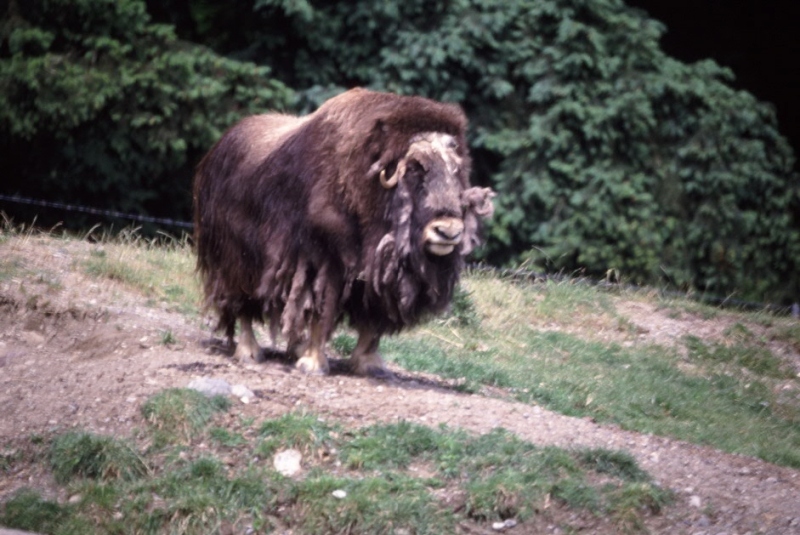Musk Oxen Form Defensive Circles
By Dave Hanks
The Musk Ox is an Arctic mammal of the Bovidae (cattle-like) family. It gets its name from a strong, “musky” odor given off when excited. Both sexes have horns and they both grow two fur coats. Their long, shaggy outer coat of straight hair, which hangs down, covers a thick, soft undercoat. These coats keep them snuggly warm during the cold Arctic winters. This fur makes excellent clothing and can be woven into shawls, sweaters, gloves, and other clothing items.
Musk Oxen are large herbivores that feed on grasses, lichens, and willows. Their hooves spread out, spreading the oxen’s weight to enable it to walk more efficiently on the winter landscape. Each toe is also sharp and is used to uncover grasses that are buried under the snow.
This bovine lives in groups as large as 24 (less in summer). The herd is not territorial and is always on the move. Dominant individuals will displace subordinates from patches of grass in winter. The bulls will roar, paw the ground, and kick a lesser herd member with a foreleg when annoyed. The cows have one calf every two years. It will huddle under its mother’s long coat for warmth during cold periods. Both the cows and calves are fiercely protected when threatened. The group may run at first, but then stop and form a defensive circle: bulls facing outward and cows and calves in the center. The bulls may even charge and try to gore an enemy.
This circle works well against their main enemy the wolf, but is a disastrous defense against humans - who can come up and slaughter the whole group. In order to get at the calves – needed for zoos, all the adults must be shot. Because of this, the Canadian government has banned Musk Ox hunting.
Musk Oxen live in Canada, Alaska, Greenland, Norway, and Russia. They were reintroduced into the Arctic Wildlife Refuge. They were almost extinct, but now there are about 350 and they are now expanding southward.
(Ovibos moschatus at the University of Alaska – Fairbanks)
|
